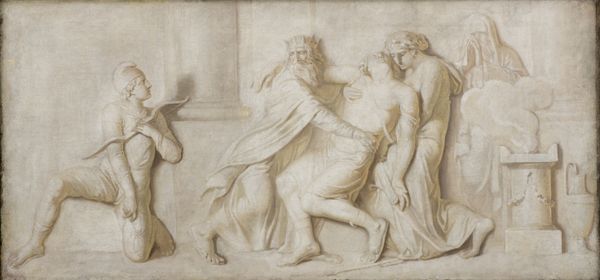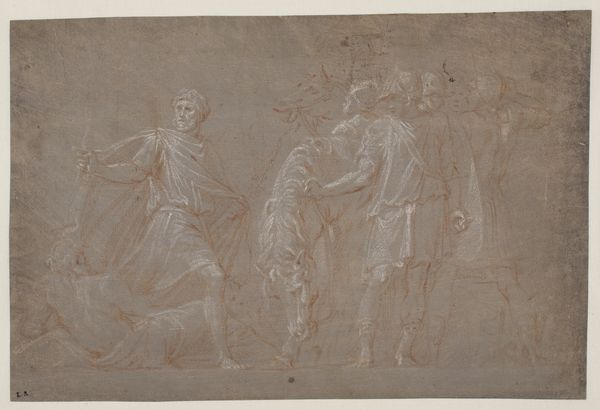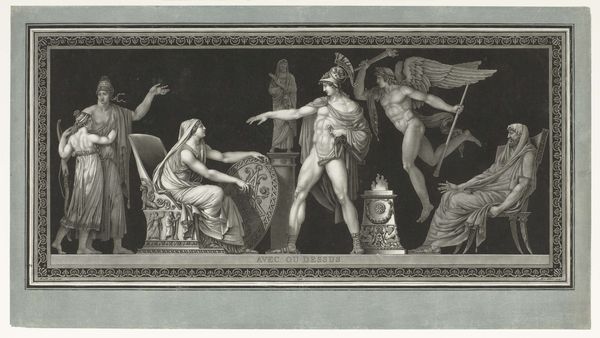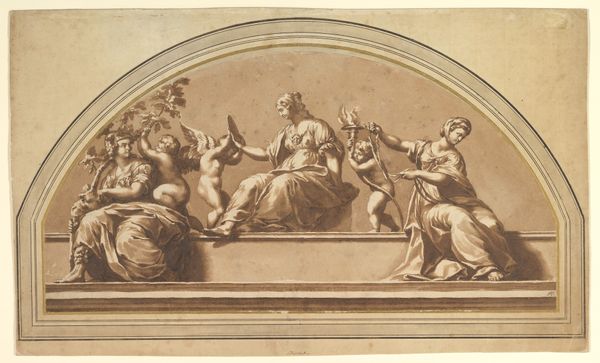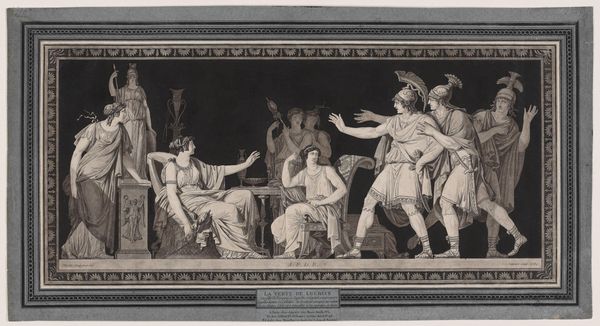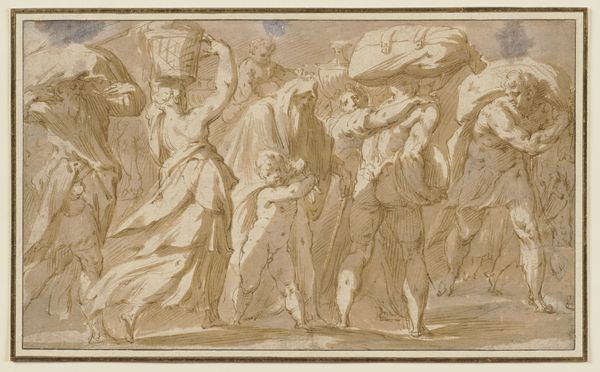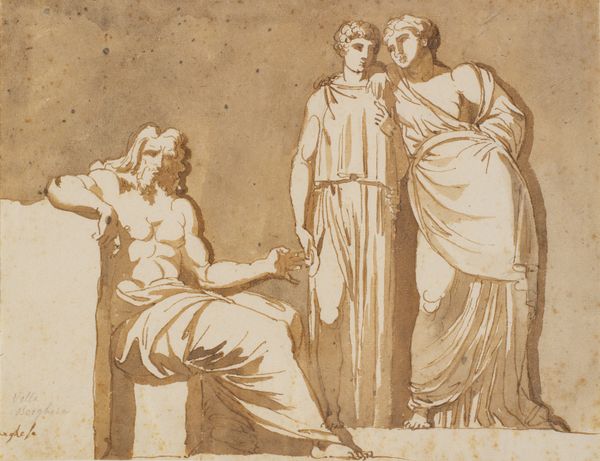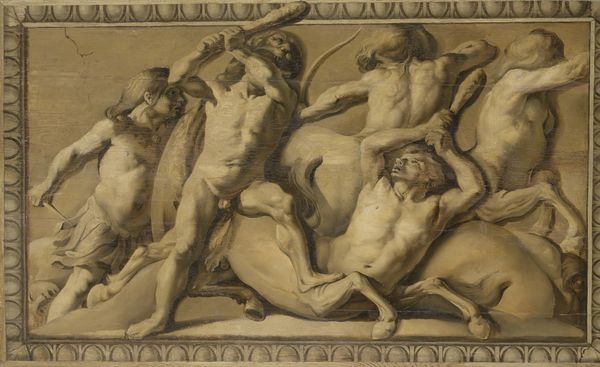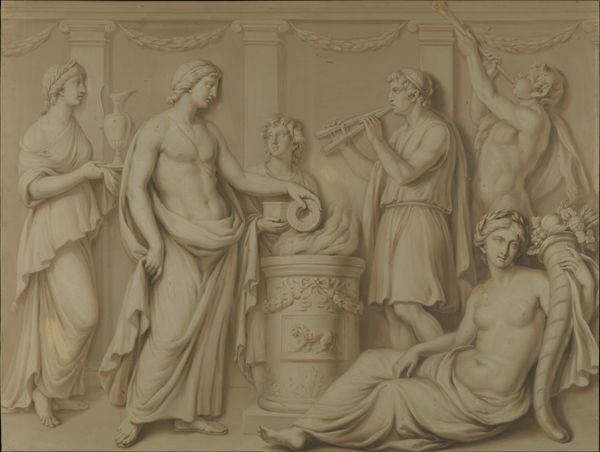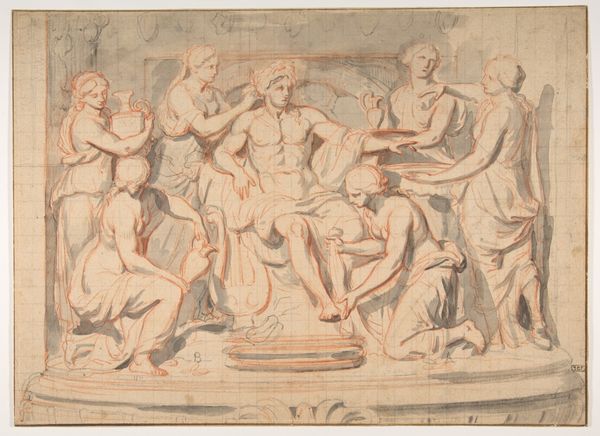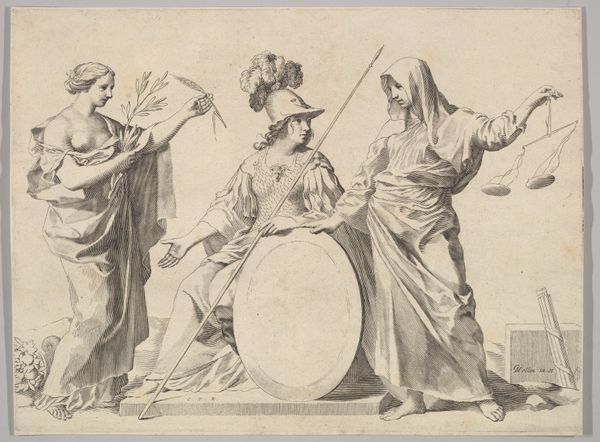
drawing
#
drawing
#
natural stone pattern
#
abstract expressionism
#
abstract painting
#
possibly oil pastel
#
oil painting
#
tile art
#
fluid art
#
underpainting
#
france
#
painting painterly
#
watercolor
Dimensions: 7 3/8 x 32 1/4 in. (18.73 x 81.92 cm) (sheet)16 7/8 x 41 1/2 x 1 7/8 in. (42.86 x 105.41 x 4.76 cm) (outer frame)
Copyright: Public Domain
Jean-Guillaume Moitte created this drawing, Dionysian Frieze, with pen and gray ink, and gray wash on paper. Here, the symbols of the god Dionysus, the wine god, appear in full force. Note the thyrsus, the fennel stalk topped with a pine cone, a symbol of prosperity, fertility, and pleasure. The maenads, female followers of Dionysus, dance ecstatically, embodying the loss of control and the divine madness associated with the cult of Dionysus. We even see Pan, half-man and half-goat, associated with fertility and the wild. These symbols evoke Bacchic rituals in ancient Greece and Rome. Similar scenes have been found on ancient pottery and Roman frescoes; gestures and symbols transcend time. The intoxicating, frenzied dance can be seen as a release of primal instincts, a celebration of life's energy. The cyclical nature of these symbols is striking. The revelry associated with Dionysus has resurfaced throughout history, evolving through different cultural contexts. Think of the medieval carnivals or modern-day festivals. Each time, the underlying human desire for liberation and ecstasy finds its expression.
Comments
minneapolisinstituteofart about 2 years ago
⋮
The French sculptor Jean-Guillaume Moitte spent two years in Rome, and this long, relief-like drawing reflects his study of ancient Roman art. In both format and subject it recalls a famous Roman wall painting, The Aldobrandini Wedding, dating from the time of Emperor Augustus and excavated in Rome in 1601. Represented here from left to right are the stages of a young woman’s initiation into carnal love. To the accompaniment of music, and led by a more knowing companion, she is carried by a faun toward the realm of lust. Then, startled and modestly covering her face and genitals, she is shown the phallus of a male herm. In the final scene, reclining now, she passionately kisses an aroused satyr.
Join the conversation
Join millions of artists and users on Artera today and experience the ultimate creative platform.
